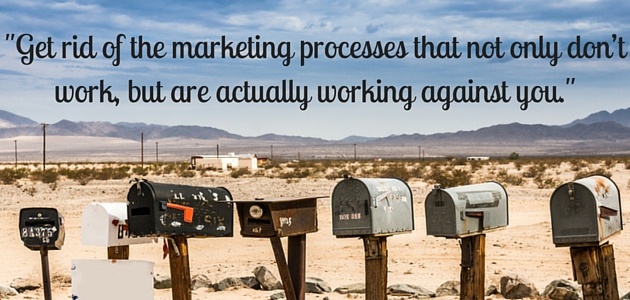

The fundamental difference between PR and marketing is that PR is earned, while marketing is paid for. In essence, any time your company name appears in a PR sense—i.e. a newspaper writes an article about you—that is far more valuable than simply paying for an ad placement out of your marketing budget. If a reader comes across you in an article in a magazine versus an advertisement in one, the former is going to give your brand and company much more credibility.
Nevertheless, traditional marketing still plays a role in the growth of companies. However, just like traditional PR, the way to successfully go about it has changed drastically. Traditional marketing in its most basic sense is based on interruption. In order for you to market to a prospect, you have to interrupt whatever they’re doing and ask them to pay attention to you. This can come in the form of TV advertisements, magazine or newspaper print ads, telemarketing, cold calling or direct mail. A more modern iteration of this is email, which we’ll discuss more in a later post. The thing that all these methods share is that the recipient did not ask to receive it.The well-known blogger and thought leader Gary Vaynerchuk has been quoted as saying “marketers ruin everything.” In the internet age, he’s absolutely right. They do this by overdoing and abusing the various methods that exist to get in touch with people. Marketers ruined the postal service by stuffing your letterbox with flyers for pizza delivery and home loans. They ruined the phone call by putting automated voices on the end of the line who call you at dinnertime or when you are taking a nap. And in the internet age, they’ve ruined email by sending out blanket email blasts to thousands of inboxes and effectively creating a market for spam filters on every email account.
In the modern era, when people are more overloaded by information than ever before, these traditional marketing methods are becoming less and less effective. By necessity, people are much more discerning about what information they let into their inbox or mailbox, and the more that is needlessly crammed in, the more they tune all of it out—even the good stuff. It’s a coping mechanism for the extraordinary amount of information we are asked to take in on a daily basis.
So, what’s a business owner to do? It’s not about completely giving up on all marketing efforts, but rather about becoming much more targeted and focused in how you execute them. Don’t waste your time and money on offline marketing activities if you can’t determine exactly how effective they are going to be for you.
It’s particularly essential to get rid of the processes that not only don’t work, but are actually working against you. The cold call is the biggest example of this. Absolutely nobody in this day and age wants to receive an unsolicited sales call; it is nothing other than offensive and infuriating. But in the B2B space it’s still commonplace for a sales director to get his employees to ‘hit the phones’ in order to attract more business. This is an old fashioned approach that I’d never advise you use unless you want to p*ss off your marketplace and waste your time.
If you’ve gone through the work of developing a specific buyer persona that you know is exactly the kind of client or prospect you’re trying to reach, then you should be spending your time and resources finding the contact info of the hundreds, or thousands, of people who fit that buyer persona, whatever it is. Effective marketing is a classic case of quality not quantity. Going through the work of “segmenting” your marketplace is a key step that many marketers skip.

Consider for a moment that the segment in its best possible form would be a segment of one; in other words, your offer is so specific and tailored, you are certain this person is going to be interested. In the consumer space, with the powerful algorithms of Amazon and Groupon, this is absolutely feasible, as those companies know exactly what each consumer is interested in based on their web activity. However, it’s unlikely to be that in the B2B space. But a good target segment would be in the low thousands, as that’s a suitably sized demographic for a specific offer.
Once you’ve mastered your “segment,” a more advanced step is to think about how you can facilitate permission-based marketing. While the general concept of “inbound” marketing will be discussed in depth later in this series, the general idea here is that you want to market to people who have already expressed an interest in you. They may have done this by landing on your website via search, or following you on Twitter. It’s “inbound” because they came to you, instead of you interrupting them.
Once they’ve shown some interest and responded to you, you can make contact with them, make offers and share information with them - this “nurture” process is less invasive and will lead to using traditional marketing techniques, like email and phone calls. But if you do it right and are ‘cool’, respectful, knowledgeable and intelligent in your approach you will qualify them ‘in or out’ as prospects without hounding them.
Never forget that in today’s marketing, most buyers are well down the sales funnel - some suggest as much as 50% - 70% - before they are willing to take a call from a sales person.
Tip 24: The best marketeers go to a lot of effort to understand the size and profile of the marketplace, the shape, behaviour and style of their prospects, before they try to engage with them!
We will talk later in this series about the importance of Buyer Personas - keep reading!
If you'd like to receive the latest 'All that PR & Marketing Bollox...Explained!' blogs straight to your inbox every week, you can subscribe below:





Submit a Comment